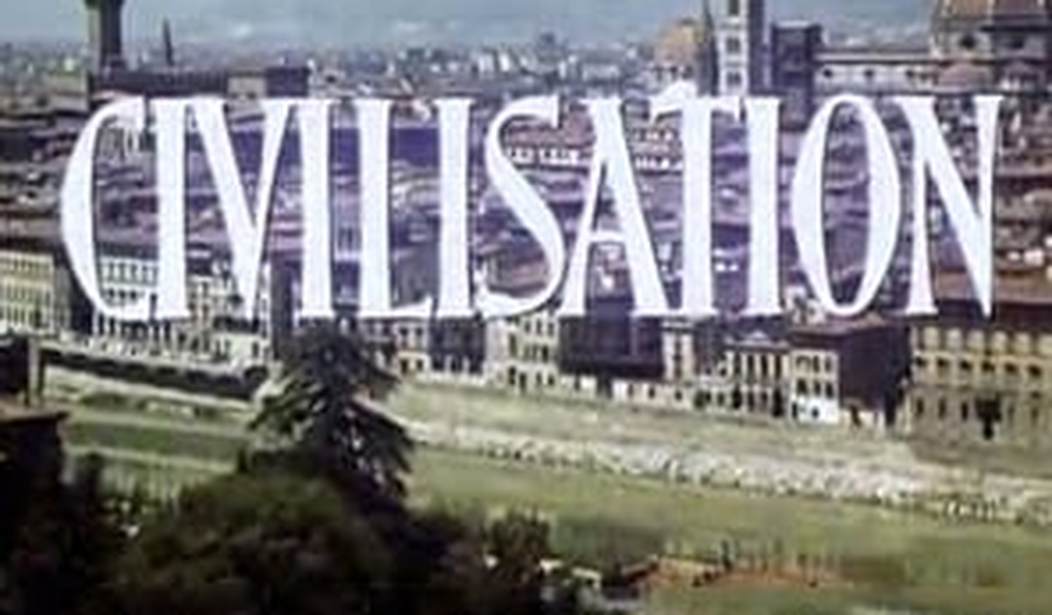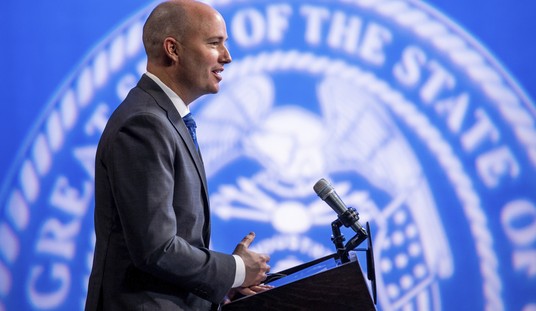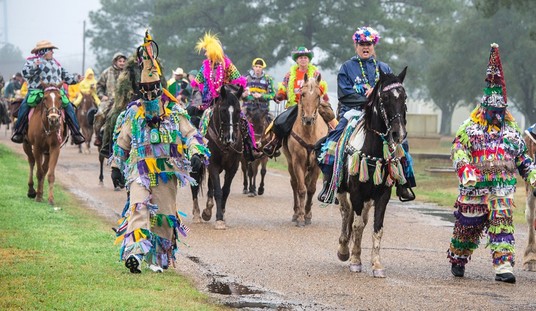Last week, we linked to Sarah Hoyt’s essay on the resilience of cultural memes from the immediate aftermath of WWI that have stayed permanently entrenched in the left’s collective thinking. Since she wrote that she’s currently fascinated by the British interwar-era, I sent her a link to the episode of the early 1970s Thames television series The World At War that focused on the British home front during WWII. As I mentioned in a post from the day after Christmas, if you want to see Britain’s welfare state being formed, and its healthcare nationalized and socialized, even as England was busy pulverizing a giant welfare state with plenty of national socialism of its own, it’s an interesting segment — probably more so to an American viewer than a British one.
As I’ve written before, The World At War was made at the perfect time — television documentary techniques were sufficiently developed by 1969 when production on the series began to tell the story properly, and it was only a quarter century after WWII concluded, and enough survivors were still around, still sharp, and able to appear on camera. But of equal importance is that it was made before political correctness had sapped the cultural confidence of the West. If the BBC or Thames’ successor network were to remake the The World at War today, it would have a very different tone to it, probably far closer to Oliver Stone’s “Springtime for Hitler and Stalin” Showtime series than the BBC would care to admit.
Also, the interviews and the contemporary non-newsreel footage were shot in color. We take that entirely for granted now, but when the show first went into production, color TV was still a new phenomenon to many English viewers; BBC2 had only begun broadcasting in color in 1967, and BBC1 not until 1969. It’s tough to conceive of something like Monty Python‘s Flying Circus as being shot in black and white, but as late as 1967, its immediate predecessor, a show with the classic title of At Last, the 1948 Show, was a monochrome production.
Another influential British documentary series from that era, which may well have influenced the style and quality of The World at War, would also have a very different tone were it made today. In fact, it probably couldn’t be made today. To help promote the BBC’s embrace of color television, in 1968 the network commissioned a 13-part documentary series titled Civilisation: A Personal View by Kenneth Clark — or simply Civilisation, as it’s almost universally called.
Civilisation debuted on February 23, 1969; to further advance the acceptance of color TV, each episode featured luscious cinema-quality photography of globe-hoping historical locations and numerous key pieces of art and sculpture, with all sorts of stately camera moves, all shot on 35mm film, rather than the cheaper-looking 16mm format or videotape. (Many, perhaps all of the episodes, are currently available in full-length form at YouTube, but the series is available on Blu-Ray, and in terms of cinematography, it’s worth it.)
It’s fascinating, in 2013, witnessing the ongoing collapse of our own culture — and in particular, the complete collapse, decades ago, of what was once called “middlebrow culture” — to watch a show titled Civilisation — that itself is from a civilization that effectively no longer exists. At the very least, the network that created the series no longer exists in the same form (QED).
Start with the show’s host, art historian Sir Kenneth Clark (1903-1983). In a 2008 post at the Corner, while stating the Clark should be in the top ten list of the “greatest educators of the last 50 years,” John Derbyshire rather acidly described his appearance as a Mike Myers caricature of a courtly English gentleman:
Not the least of the charms of the thing is Clark (he was later knighted, to become Sir Kenneth) himself. He is, as Bertie Wooster would have said, an odd-looking bird: an unnaturally fleshy, perhaps goiterous, neck, a squint, Austin Powers teeth, and the sort of exquisitely shabby and ill-fitting menswear that you can only get from terrifically exclusive and expensive London tailors. He is the master of his material, though — talk about effortless superiority! You should watch Civilisation, if you haven’t. More important, you should have your kids watch it.
(I’ll grant Clark the unfortunate dentition that Derb mentions, but Clark, at least as he appears in Civilisation, is one sharp dresser. I’d like to meet his tailor, to coin a phrase.)
Jerry Springer recently claimed that “I am the father of the destruction of Western civilization.” I think that’s going a bit too far — Jerry’s merely the Pied Piper of its destruction. (Though I’d add Howard Stern and Morton Downey, Jr. to the broadcasting troika from Hell.) But decades ago, Clark was both attempting to keep Civilization alive, and define what the word meant. The title of the series alone would probably prevent it from being made, given the leftist elite’s multicultural construct. And even if it were to run that gauntlet, can anyone imagine a British series in 2013 opening with the following statement?
The first episode in the series begins with Clark asking, “What is civilization?”—and answering, straight-out: “I don’t know. I can’t define it in abstract terms yet. But I think I can recognize it when I see it.” He then turns to the Notre Dame cathedral in the background and states, “I’m looking at it now.”
And then note the show’s final episode, embedded below. It includes shots of the Concorde — another relic from a bygone civilization — while still on the assembly line. But despite the show’s emphasis on art and aesthetics as benchmarks for civilization’s progress, Clark doesn’t comment on the then-new Corbusier-inspired appalling brutalist concrete architecture built by the University of East Anglia. (The “hide the decline” institution currently involved in freeze-drying and turning the clock back on man’s progress.) His silence unintentionally spotlights how post-WWI-era modernism (to echo Sarah Hoyt’s essay) was simply the law of the land, making the final episode of the show a sort of Whig History story of modernism’s inevitable ascension. Or as Joseph Pearce wrote last year for the Catholic-themed Crisis Magazine:
The truth is that Clark is a decidedly modern man who sees history and civilisation through the superciliously defective lens of post-“enlightened”, i.e. disenchanted, culture. Although not quite Eliot’s “hollow man” or Waugh’s “Hooper”, his vision is sullied by the sundering of reason from faith and feeling. For all his love of the Renaissance, he is a child of the enlightenment and is the slave of that particularly pernicious zeitgeist.
That seems awfully harsh, especially considering that the decidedly modern men of the post-WWII era certainly were much more complete men than their successors. Not to mention, much more optimistic about the civilization they inherited. And with WWII still fresh in their minds, with the Cold War then still raging, rather more aware of how fragile it was. Clark concludes the series with some seemingly simple advice that now seems remarkably prescient from our vantage point in 2013:
I said at the beginning that it is a lack of confidence, more than anything else that kills a civilization. We can destroy ourselves by cynicism and disillusion, just as effectively as by bombs.
I doubt Clark had any idea what was already breaking, on both sides of the Atlantic, a trend that would only accelerate.
Related: At the Tatler, Bryan Preston notes that PC now produces a rather different kind of history of civilization: “Recasting History: Scholarly Study Finds that Race, Class, and Gender Studies Crowd Up University American History Classes.”
(Bumped to top.)









Join the conversation as a VIP Member